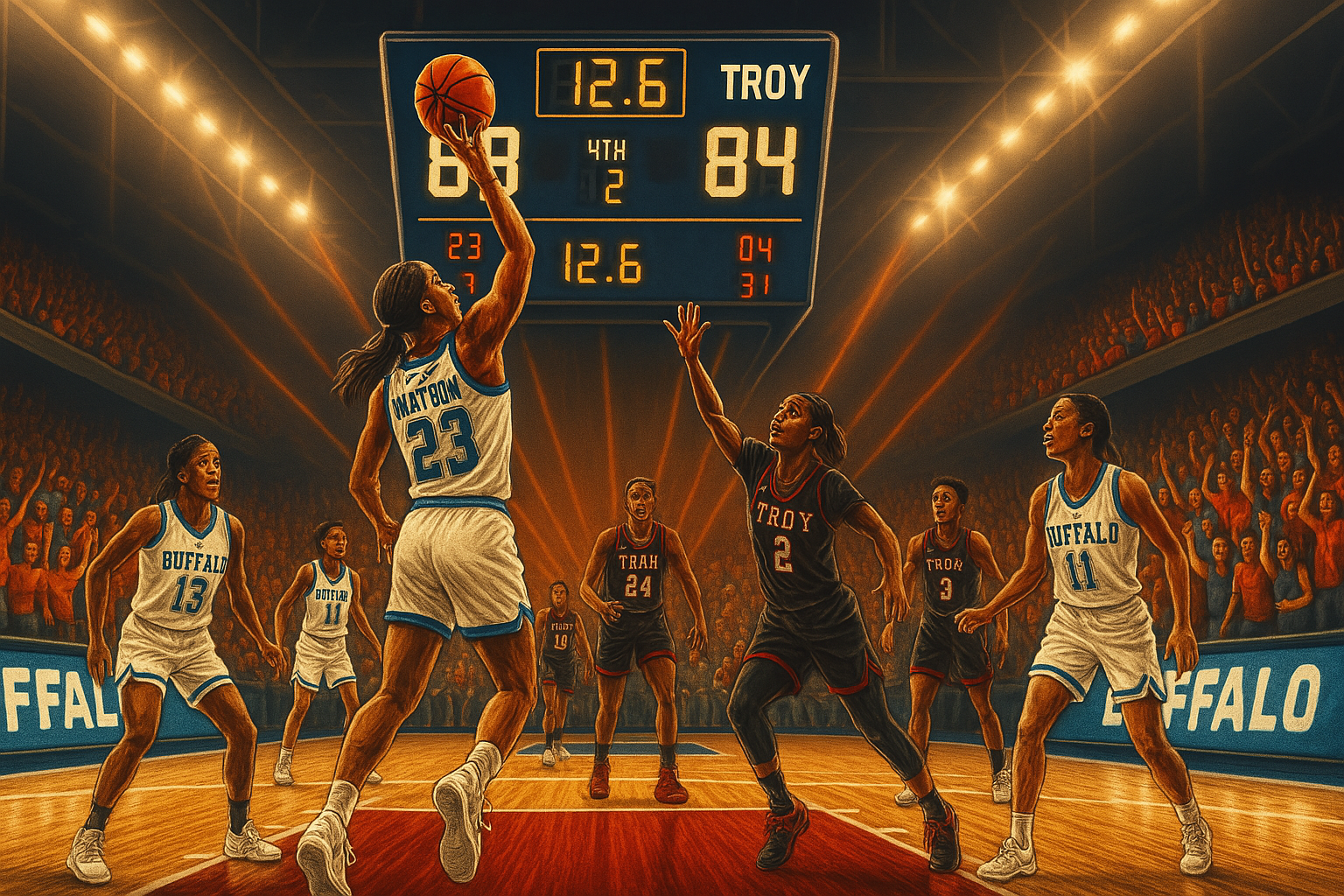Clemson Secures Dominant Win Over Syracuse Behind Hunter’s Stellar Performance
Tigers Extend Strong Start to ACC Play
Clemson delivered a commanding performance Wednesday night, defeating Syracuse 86-72 at Littlejohn Coliseum. The Tigers, now 16-4 overall and 8-1 in ACC play, extended their hot streak to seven wins in their last eight games. Chase Hunter led the charge with 23 points, including 18 in the first half, while Viktor Lakhin added a double-double with 16 points and 10 rebounds.
Syracuse, falling to 9-10 overall and 3-5 in ACC play, struggled to keep up with Clemson’s efficiency. Despite a strong showing from JJ Starling, who scored 25 points, turnovers and defensive lapses plagued the Orange throughout the game.
A Hot Start for Clemson
The game began as a back-and-forth affair, featuring six lead changes in the opening eight minutes. However, Hunter’s three-pointer at the 12-minute mark gave Clemson a lead they would not relinquish. The Tigers closed the half on a 28-10 run, capitalizing on Syracuse’s nine first-half turnovers. Clemson’s relentless defense and efficient offense propelled them to a 48-29 halftime lead, tying their highest-scoring first half of the season.
Hunter’s offensive explosion set the tone for Clemson, as he went 7-of-9 from the field and 4-of-5 from beyond the arc in the first half. Syracuse, meanwhile, leaned heavily on Starling, who scored 17 of his team’s 29 first-half points. The rest of the Orange combined for just 12 points, highlighting their reliance on Starling’s scoring.
Second-Half Dominance by the Tigers
Clemson maintained their control in the second half, continuing to execute offensively while stifling Syracuse’s attempts to cut into the lead. Viktor Lakhin’s dominance in the paint proved invaluable as he secured rebounds and altered shots defensively. His presence gave Clemson second-chance opportunities on offense while limiting Syracuse’s ability to capitalize on missed shots.
The Tigers’ balanced scoring effort was on full display, with Jaeden Zackery contributing 14 points and Ian Schieffelin adding 11 points. Clemson’s ability to generate points in transition and dominate the paint with 40 points inside further widened the gap between the two teams.
Syracuse’s late push, highlighted by three consecutive three-pointers, briefly narrowed the deficit to 14 points in the final minute. However, Clemson’s composure in closing out the game ensured there was no serious threat to their lead.
Clemson’s Defensive Prowess
Clemson’s defensive intensity was a crucial factor in their victory. The Tigers forced 14 turnovers, converting them into 19 points, while committing only seven turnovers themselves. Their ability to disrupt Syracuse’s offensive flow and create fast-break opportunities kept the Orange on the back foot for much of the game.
Hunter’s three steals pushed him to 100 career steals, further showcasing his impact on both ends of the floor. The team’s cohesive defensive effort made it difficult for Syracuse to establish any rhythm, particularly in the first half, when the Orange managed just 12 points outside of Starling’s contributions.
Syracuse’s Struggles and Starling’s Lone Bright Spot
Syracuse’s reliance on JJ Starling was evident throughout the game. The junior guard accounted for nearly one-third of his team’s points, finishing with 25 on 10-of-16 shooting. Starling’s ability to score inside and hit mid-range jumpers kept Syracuse competitive in stretches, but the lack of support from his teammates limited the Orange’s ability to sustain momentum.
Eddie Lampkin provided some help with 14 points, but the rest of the Syracuse lineup struggled to make an impact. The Orange’s 14 turnovers, combined with their inability to capitalize on Clemson’s occasional defensive lapses, ultimately proved too much to overcome.
Key Statistical Highlights
Clemson’s efficient shooting played a significant role in their victory. The Tigers shot 57.6% from the field and 45% from beyond the arc, demonstrating their ability to score from all areas of the court. Their 40 points in the paint underscored their dominance inside, while their nine three-pointers showcased their perimeter shooting.
Syracuse, in contrast, shot 54% from the field but struggled to convert from three-point range, hitting only six of 17 attempts. Their inability to generate points off turnovers and missed opportunities in transition further widened the gap between the two teams.
Turning Point: Clemson’s First-Half Surge
The game’s turning point came late in the first half when Clemson went on a decisive 28-10 run. This stretch was fueled by Hunter’s scoring and the Tigers’ defensive pressure, which forced nine first-half turnovers. The surge gave Clemson a commanding lead heading into halftime, setting the tone for the remainder of the game.
Looking Ahead
Clemson will aim to build on this momentum as they travel to Virginia Tech on Saturday. The Tigers’ strong start to ACC play has positioned them as one of the conference’s top contenders, and their ability to execute on both ends of the floor makes them a formidable opponent.
Syracuse, meanwhile, will return home to host Pittsburgh on Saturday. The Orange will need to address their turnover issues and find ways to involve more players offensively if they hope to rebound from this loss.
A Statement Win for Clemson
This victory further solidified Clemson’s position as a top ACC team. Their balanced scoring, defensive intensity, and ability to capitalize on Syracuse’s mistakes highlighted their potential to make a deep run in conference play. For Syracuse, the game underscored areas for improvement, particularly in limiting turnovers and generating consistent offense outside of Starling. Both teams will use this matchup as a learning experience as they prepare for the challenges ahead.









